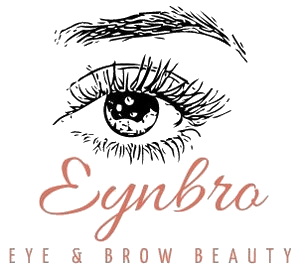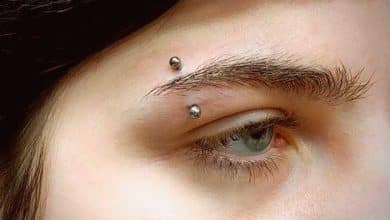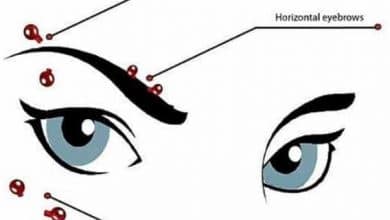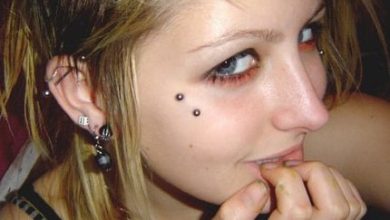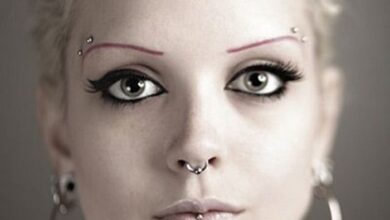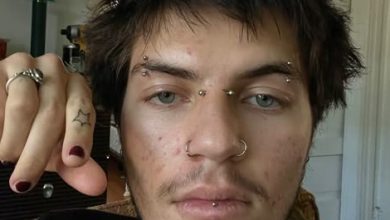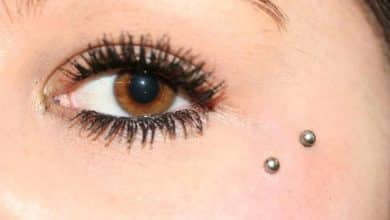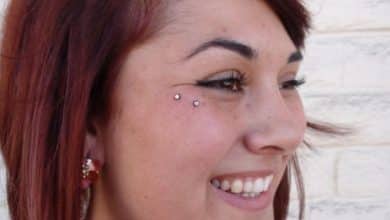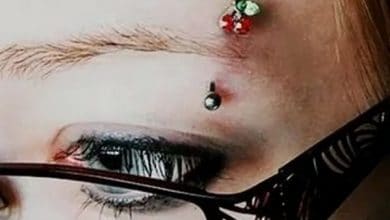The Ultimate Guide to Eyebrow Piercing Healing Process
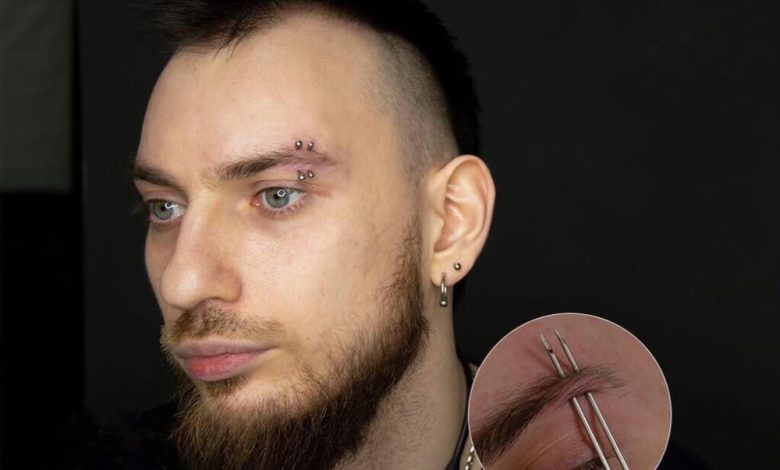
Eyebrow piercing is a popular form of body art that involves puncturing a small hole through the skin and tissue of the eyebrow. While this piercing can look stylish and edgy, it is important to understand the potential risks and complications associated with the procedure, as well as the proper aftercare practices necessary for healing and minimizing these risks.
In this comprehensive guide, we will cover everything you need to know about the eyebrow piercing healing process, including common risks and complications, best aftercare practices, signs of infection, and what to do if your piercing doesn’t seem to be healing properly.
Key Takeaways:
- Eyebrow piercing involves puncturing a small hole through the skin and tissue of the eyebrow for the purpose of body art.
- Proper aftercare practices are crucial for ensuring proper healing and minimizing risks and complications.
- Signs of infection during the healing process include redness, swelling, pain, and discharge.
- If your eyebrow piercing isn’t healing properly, it’s important to seek medical attention and follow proper aftercare practices.
If you’re considering getting an eyebrow piercing, you probably have a lot of questions about the healing process. The good news is that with proper care, eyebrow piercings can heal quickly and without complications. In this guide, we’ll cover everything you need to know about the eyebrow piercing healing process.
Eyebrow Piercing: An Overview
An eyebrow piercing is a type of body piercing that involves inserting jewelry through the skin of the eyebrow. The most common type of eyebrow piercing is a vertical piercing through the ridge of the eyebrow, but horizontal piercings are also possible.
Eyebrow piercings are usually done with a needle, and the jewelry used can vary depending on your personal preferences. Common types of jewelry for eyebrow piercings include captive bead rings, curved barbells, and straight barbells.
What to Expect
After getting an eyebrow piercing, you can expect some mild swelling and redness around the piercing site. You may also experience some tenderness and mild discomfort.
In the first few days after getting your piercing, you may notice some discharge of lymph fluid, which is a normal part of the healing process. This fluid may be clear or slightly yellow in color.
Aftercare
Proper aftercare is crucial for the healing process of your eyebrow piercing. Here are some tips to help your piercing heal properly:
Cleaning
Clean your piercing twice a day with a saline solution. You can either buy a pre-made saline solution or make your own by mixing 1/4 teaspoon of non-iodized sea salt with 8 ounces of warm water. Use a cotton swab or sterile gauze to apply the saline solution to your piercing.
Avoid Touching
Avoid touching your piercing unless necessary, as this can introduce bacteria and cause infection. If you do need to touch your piercing, make sure your hands are clean.
Avoid Irritants
Avoid exposing your piercing to irritants such as makeup, hairspray, and other beauty products. These can cause irritation and delay the healing process.
Avoid Swimming
Avoid swimming, especially in pools or hot tubs, until your piercing is fully healed. The water in these environments can contain bacteria that can cause infection.
Signs of Infection
While infections are rare, they can occur. Here are some signs of infection to look out for:
- Increased redness and swelling
- Pain and tenderness that doesn’t improve
- Discharge that is thick, green, or yellow in color
- A fever or other signs of illness
If you notice any of these signs, contact your piercer or healthcare provider for advice.
After Healing
Once your eyebrow piercing is fully healed, you can change the jewelry to suit your style preferences. However, it’s important to wait until your piercing is fully healed before changing the jewelry to avoid complications.
Changing Jewelry
If you’re changing your jewelry, make sure to use high-quality jewelry made of materials like titanium, niobium, or surgical stainless steel. Avoid jewelry made of low-quality materials like nickel, which can cause irritation and allergic reactions.
Long-Term Care
Even after your eyebrow piercing is fully healed, it’s important to continue taking care of it. Here are some tips for long-term care:
- Clean your piercing regularly to prevent infection
- Avoid using harsh beauty products on or near your piercing
- Avoid touching your piercing unless necessary
- Monitor your piercing for signs of infection or other complications
Getting an eyebrow piercing can be a fun and stylish way to express yourself, but it’s important to understand the healing process and take proper care of your piercing. By following the tips outlined in this guide, you can ensure that your eyebrow piercing heals properly and without complications. Remember to always monitor your piercing for signs of infection or other issues, and seek medical attention if necessary. With the right care, your eyebrow piercing can be a beautiful and long-lasting addition to your style.
Frequently Asked Questions
1. Do eyebrow piercings leave holes?
Yes, eyebrow piercings can leave holes, especially if they are not properly taken care of during the healing process or if the piercing is removed too soon. It’s important to note that everyone’s skin and healing process are different, so the size and visibility of the hole will vary from person to person.
If you decide to remove your eyebrow piercing, it’s important to let it heal properly before doing so to minimize scarring and the appearance of a visible hole. This means waiting until the piercing is fully healed before removing it and following proper aftercare instructions to ensure proper healing.
2. How long will my eyebrow piercing be swollen?
Swelling is a normal part of the healing process for an eyebrow piercing and can last for a few days to a few weeks depending on the individual. The amount of swelling can also vary depending on the placement of the piercing and the aftercare practices.
To reduce swelling, it’s important to avoid touching or moving the piercing, avoid sleeping on the side of the piercing, and apply a cold compress or ice pack to the area for 10-15 minutes at a time, several times a day. If swelling persists for an extended period of time or is accompanied by other symptoms such as redness or pain, it’s important to seek medical attention as it could be a sign of infection.
3. Is Bleeding After eyebrow piercing normal?
It is not uncommon to experience some bleeding after getting an eyebrow piercing, especially during the initial piercing process. However, excessive bleeding or bleeding that lasts for an extended period of time should be monitored closely as it could be a sign of infection or other complications.
To help minimize bleeding, it’s important to follow proper aftercare practices such as avoiding touching or moving the piercing, avoiding sleeping on the side of the piercing, and avoiding activities that could cause trauma to the piercing site. If bleeding persists or is accompanied by other symptoms such as pain or redness, seek medical attention.
4. What is the most painful piercings you can get?
Pain levels for piercings can vary greatly depending on individual pain tolerance and the placement of the piercing. Generally, piercings that go through cartilage or dense tissue are considered to be more painful than those that go through softer tissue.
Some of the most commonly cited painful piercings include nipple piercings, genital piercings, and cartilage piercings such as the rook or daith. However, it’s important to remember that pain levels are subjective and can vary greatly from person to person.
5. What are the common risks and complications associated with eyebrow piercings?
Common risks and complications associated with eyebrow piercings include infection, migration or rejection of the piercing, scarring, and keloid formation. It’s important to closely monitor your piercing during the healing process and seek medical attention if you experience any signs of infection or other issues.
To help minimize risks and complications, it’s important to follow proper aftercare practices such as cleaning the piercing regularly with saline solution, avoiding touching or moving the piercing, and avoiding activities that could cause trauma to the piercing site.
6. How long does the healing process take for an eyebrow piercing?
The healing process for an eyebrow piercing can vary depending on the individual and aftercare practices, but generally takes around 6-8 weeks for the initial healing period. However, it’s important to continue proper aftercare practices for several months after the piercing to ensure full healing and minimize the risk of complications.
7- What are the best aftercare practices to ensure proper healing of an eyebrow piercing?
Proper aftercare is essential to ensure that an eyebrow piercing heals properly and without complications. Here are some recommended aftercare practices:
- Keep the piercing clean: Gently clean the piercing twice a day using saline solution or a mild, fragrance-free soap. Avoid using harsh chemicals or alcohol-based products.
- Avoid touching or twisting the piercing: Keep your hands away from the piercing and avoid twisting or moving the jewelry.
- Use a clean pillowcase: Change your pillowcase frequently to avoid introducing bacteria or dirt into the piercing.
- Avoid makeup and skincare products: Keep makeup, lotions, and other skincare products away from the piercing to avoid irritation or infection.
- Avoid swimming and hot tubs: Avoid swimming in pools, hot tubs, and other bodies of water during the healing process to minimize the risk of infection.
- Be careful when styling your hair: Avoid getting hair products or hair strands caught in the jewelry, and be careful not to bump or tug on the piercing when styling your hair.
- Wear comfortable clothing: Avoid tight or restrictive clothing that may rub against the piercing and irritate the skin.
8- What are some signs of infection during the healing process of an eyebrow piercing?
During the healing process of an eyebrow piercing, it’s important to keep an eye out for any signs of infection. Some common signs of infection include redness, swelling, pain, discharge of pus or blood, and a warm feeling around the piercing area. If you notice any of these symptoms, it’s important to take action immediately to prevent the infection from spreading.
9- How can you prevent infection during the healing process of an eyebrow piercing?
Preventing infection during the healing process of an eyebrow piercing is crucial for proper healing. To prevent infection, it’s important to keep the piercing area clean and avoid touching it with dirty hands. You should clean the piercing area twice a day with a saline solution or a gentle soap and warm water. Avoid using harsh chemicals or alcohol-based products, as they can irritate the piercing and slow down the healing process.
It’s also important to avoid swimming in pools or hot tubs during the healing process, as they can harbor bacteria that can cause infection. Additionally, avoid using makeup or other beauty products on or around the piercing area until it’s fully healed.
10- What should you do if your eyebrow piercing doesn’t seem to be healing properly?
If your eyebrow piercing doesn’t seem to be healing properly, it’s important to seek professional advice from a piercer or a healthcare provider. They can examine the piercing and determine if there is an infection or another issue that needs to be addressed. In some cases, you may need to remove the jewelry or undergo treatment to clear up an infection before the piercing can heal properly. It’s important to avoid self-treatment or ignoring the issue, as it can lead to more serious complications.
Conclusion
In conclusion, eyebrow piercing can be a stylish and unique form of body art, but it is important to approach the process with caution and care. By following the proper aftercare practices, you can ensure that your piercing heals properly and minimize the risk of infection and other complications. If you experience any issues with healing, it is important to seek medical attention and address the issue promptly. With the right knowledge and approach, you can enjoy your eyebrow piercing for years to come.
